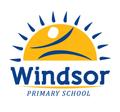Curriculum

Foundation - Yr 2 Term 2 Overview
Literacy | |
Reading Different sounds created from letter combinations including graphs, digraphs and trigraphs using Little Learners Love Literacy
Retell a story to increase understanding of ideas and information in a text
Choosing appropriate texts for independent reading
Concepts of print and screen such as headings, navigation bars, images and scrolling to access digital print
Fiction and non-fiction attributes | Writing Using facts and opinions in writing Synonyms Identify audience and purpose of writing Using the 5W’s to add further detail - Who? What? Where? When? Why?
Presentation - headings, handwriting, spacing, diagrams and illustrations
|
Numeracy |
Represent and solve simple addition and subtraction problems using a range of strategies including counting on, partitioning and rearranging parts
Solve simple addition and subtraction problems using a range of efficient mental and written strategies
Count and order small collections of Australian coins and notes according to their value
Develop confidence with number sequences to and from 100 by ones from any starting point. Skip count by twos, fives and tens starting from zero
Investigate number sequences, initially those increasing and decreasing by twos, threes, five and ten from any starting point, then moving to other sequences
Tell time to the half hour or quarter hour, using the language of ‘past’ and ‘to’
Name and order months and seasons
Recognise, describe and classify familiar two-dimensional shapes and three- dimensional objects using obvious features
Describe and draw two-dimensional or three-dimensional shapes
Identify practical activities and everyday events that involve chance |
Science & Geography |
Biological Science Living Things Need Different Things
Geography Local Connections to Country |
Year 3 - 6 Term 2 Overview
Literacy | |
Reading
Checking for Understanding – Comprehension
Using Punctuation to Enhance Phrasing – Fluency
Skipping the Word & Coming Back – Accuracy
Using Referencing Tools – Expand Vocabulary
Asking Questions Throughout Reading Process – Comprehension
Using Prior Knowledge & Context Clues – Expand Vocabulary
Adjusting & Applying Different Reading Rates to Match Text – Fluency
Comparing & Contrasting Within & Between Texts – Comprehension
Using Word Parts – Expand Vocabulary
Making & Adjusting Predictions – Comprehension
| Writing Ideas: Narrowing ideas
Ideas: Elaborating on ideas
Word Choice
Sentence Fluency
|
Numeracy |
Sub-strand: Number and place value Recognise, model, represent and order numbers to at least 10 000 (Level 3) Apply place value to partition, rearrange and regroup numbers to at least 10,000 to assist calculations and solve problems (Level 3) Recognise, represent and order numbers to at least tens of thousands (Level 4) Apply place value to partition, rearrange and regroup numbers to at least tens of thousands to assist calculations and solve problems (Level 4) Concept: recognise that the place value system can be extended to tenths and hundredths. Make connections between fractions and decimal notation (Level 4) Concept: Recognise, represent and order numbers to at least hundreds of thousands (Level 5) Concept: Use estimation and rounding to check the reasonableness of answers and calculations (Level 5) Concept: Recognise that the place value system can be extended beyond hundredths. (Level 5) Concept: Investigate everyday situations that use integers. Locate and represent these numbers on a number line. (Level 6) Sub-strand: Fractions and Decimals Concept: Model and represent unit fractions including ½, ¼, ⅓, ⅕ and their multiples to a complete whole (Level 3) Concept: Investigate equivalent fractions used in contexts (Level 4) Concept: Count by quarters, halves and thirds, including with mixed numerals. Locate and represent these fractions on a number line. (Level 4) Concept: Compare and order common unit fractions and locate and represent them on a number line (Level 5) Concept: Compare, order and represent decimals (Level 5) Concept: Compare fractions with related denominators and locate and represent them on a number line (Level 6) Concept: Find a simple fraction of a quantity where the result is a whole number, with and without digital technologies (Level 6) Concept: Make connections between equivalent fractions, decimals and percentages (Level 6) |
Science & Geography |
Biological Science Living Things Need Different Things
Geography Local Connections to Country |
